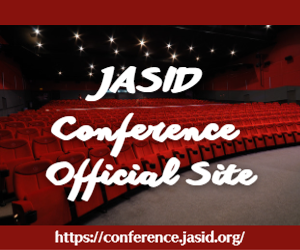新刊案内:「Myanmar The Riddles of Coup d’État~A Key is in China」

7月末、「Myanmar The Riddles of Coup d’État~A Key is in China」をキンドル・デジタル版にて出版いたしました。昨年3月末に出版した日本語版に加筆して英語にしました。
2021年2月1日にミャンマー国軍が実行したクーデターの背景と動機、国軍がアウンサンスーチーを含む与党に伝えたかった国家建設の歴史をまとめました。
建国後間もない国が見舞われがちな大きな問題が複数今に至るも残り、国民を巻き添えにして苦しめています。研究を始めて概要を理解できるまでに20年以上かかりました。
特に、この7年間の結論を追う過程を読者の皆様に共有してい ただきたく、一人称で書き進めております。アマゾン・キンドル版でご入手いただけます。
情報共有の為、ここにご案内申し上げます。
<Table of Contents>
Preface
Introduction
Names and biographies of the key figures
Acronyms and Abbreviations
Maps
Chapter 1 Riddle #1 “Why did the army cause a coup d’état?”
1.Coup d’état
(1)The pre-dawn events of February 1st 2021
(2)Allegations Made Against Aung San Suu Kyi
(3)Progression of the coup d’état —- Unexpectedly broad public resistance, Escalation of armed suppression, Democrats approach armed groups to counter against the Tatmadaw, Underestimation by the Tatmadaw of the people’s opposition, Where do the armed groups’ weapons come from?
2.Army actions and law
(1)A constitution that gives confidence to the Tatmadaw
(2)Background of the Constitution’s basic principles
(3)Political, economic and social goals promulgated alongside the basic principles
(4)Paying attention to the Commander-in-Chief’s speeches
3.The actions of Aung San Suu Kyi
(1)Ministry and agency reform—- The General Administration Department, Ministry of Home Affairs, the only functioning department in the administration, was fully under the control of the Tatmadaw, Aung San Suu Kyi moved the General Administration Department into her hands, Election-related functions
(2)Intimate diplomacy with China—-Talks with the Chinese Prime Minister prior to the inauguration of the administration, The Belt and Road Initiative launched after the administration’s inauguration
(3)Failure of ceasefire talks and the Northern Alliance between ethnic armed groups—-The Chinese-backed Northern Alliance resists peace, A difference in the level of commitment to the Thein Sein administration, Real motives for ethnic groups to have weapons,
(4)No information sharing with the Tatmadaw and regression of the rule of law—- Peaceful transition of power in which necessary cooperation was ignored
Chapter 2. Riddle #2 “Why does the army not divide?”
1. A cohesive army and war veterans
(1)A national army with more than 400,000 soldiers—- The long-time allegations of “a political system being created just for the Tatmadaw”, A Theory: The basis for maintaining power is the monopoly of natural resources
(2)The composition and motives that form the strength of the Tatmadaw—- A modernized military structure, Training started after independence
(3)Training started after independence
(4)An army in a fragile nation
2. Who are they fighting?
(1) “Independence” from China, the fated enemy nation
(2) Risk of the sovereign state’s collapse immediately after independence
3. Taking a geopolitical perspective
(1) Population pressure from neighboring countries—- The geographical conditions of being surrounded by countries with large populations, National unification has been a challenge since the founding of the country
(2) Invasion from the west—- Bengali Muslims (known as Rohingya) from the west, Labor migration in the 19th century, Much better living conditions compared to Bangladesh, Changing policies of Bangladeshi politicians
(3) Attacks from Islamic countries
4. Myanmar’s critical weakness
(1) A nation with poor acculturation
(2) Did the lack of acculturation give rise to a devotion of a new culture?
(3) A fragile identity creates a disorganized people—- Who are the Myanmar people?, A tendency to interpret “different” as “incompatible”
Chapter 3. Riddle #3 “The established theory of the first ceasefire agreement is full of contradictions.”
1. An incomprehensible ceasefire agreement in 1989
(1) My issue with the established theories—- A first ceasefire agreement too divergent from the 2008 Constitution, The established theory that military power, border trade, and sovereignty were allowed,
(2) What was the Tatmadaw’s motive for a ceasefire?—- Three possible motives
(3) Reading the army doctrine—- Three major basic principles established in 1988, The hypothesis that national unification may not have been achieved
2. Querying military strategy
(1) The question of whether Myanmar achieved national unification
(2) Words from a former Peace Team Leader—- Interview
3. The truth about the ceasefire talks
(1) First ceasefire agreement aimed at natural elimination—-Hypothetical consistencies and differences, “Individual promises between men” are stronger than document
(2) War economy vs. the Four Cuts strategy—- Ceasefire talks in the 21st century with increased transaction costs
Chapter 4. Riddle #4 “Why were demonetization orders issued?”
1. The riddle of the demonetization orders
(1) The trigger for the democratization movement
(2) No-one can explain the demonetization orders satisfactorily
2. Was that the intersection of domestic politics and national defense?
(1) The aim was to destroy the Burma Communist Party
(2) Continued cooperation despite tensions with China
3. Column: Gaining information from Myanmar people
Chapter 5. Riddle #5. “Why China does not attack”
1. Is the established theory that China and Myanmar have a close relationship true?—- Reputation in the international community, China poses a threat through ethnic minorities
2. China’s interest in Myanmar
(1) No China-Myanmar alliance
(2) The suspicion that China built a communications base on an Andaman Sea island
(3) Territorial ambition—-The signing of the 1960 border treaty
3. Myanmar brought about a major shift to China’s reform and opening up
(1) China awakened to state-to-state business
(2) Myanmar’s maintaining of national security through economic projects—-China benefits from there being ethnic armed groups
Conclusion
Excerpt from Constitution of the Republic of the Union of Myanmar (2008)
Chronology
References
本件にかんするお問い合わせ先
吉田鈴香
- yoshida-suzuka [at] hotmail.com(* [at] の部分を@に修正してご使用ください)
